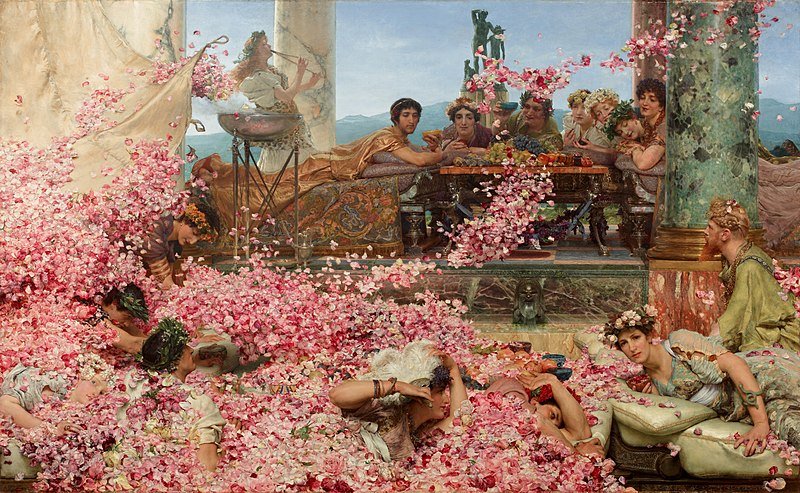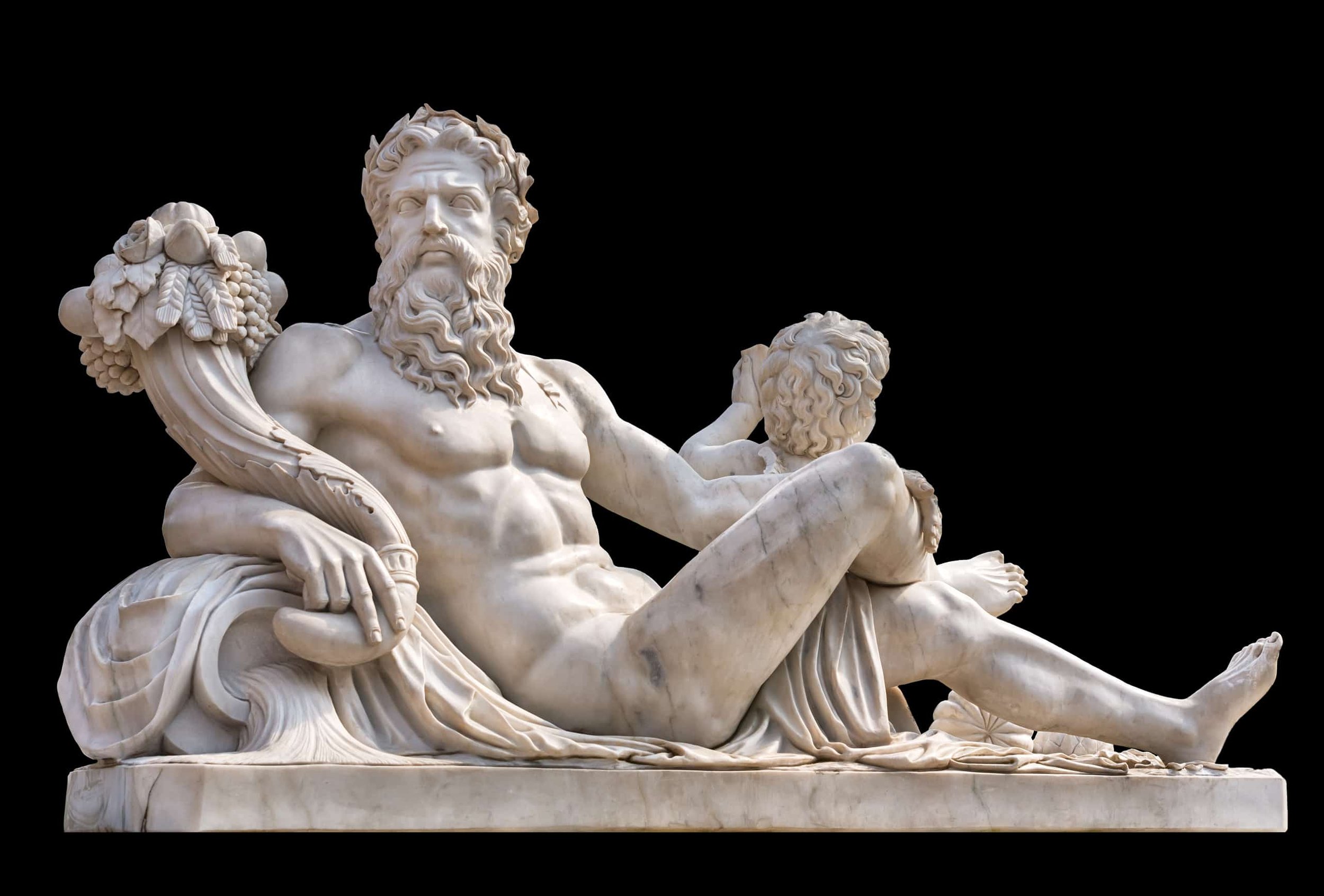The History of Floristry
The art of floristry has been around for a lot longer than people realise. Not only has it been dated back to the Egyptians but also has a long and dense artistic science behind it as an art form. I fell in love with flowers when I was a young girl and happened across an ancient flower market in Adderley Street, Cape Town where I was lucky enough to learn some skills rarely seen in the western world, which also made me realise that there must be a long history or rare and unusual floristry skills that have been forgotten and overlooked.
My objective? To utilise unusual flowers, a clever combination of colours and minimal greenery to compose flowers into unique and structured arrangements. But where did this all come from…
Ancient Egypt
The earliest known records of flower arranging date back to ancient Egypt (2,500 BCE.) Egyptians were the first to cut and place flowers in vessels to decorate and add colour to their surrounding spaces, often choosing flowers and designs with symbolic meaning. Egyptians were known as the first official florists by trade and were commissioned by the wealthy to place highly decorative and artistic arrangements around burials, special events and as elaborate table decorations.
Ancient Egyptian floristry is one of the four types of historical floristry that make up the Classical Period of design style. There is extensive evidence of their masterful arrangements in the wall and tomb decoration/artefacts from the era. It become obvious that the ancient Egyptians and in-particular the Royals, made extensive use out of flower arrangements styled in baskets and vases (the vessels I mentioned earlier.) They frequently used and even cultivated roses, acacia, violets, poppies, violets, jasmine, Madonna lilies and narcissus. However the Lotus Blossom was considered sacred in ancient Egyptian culture, as they believed its yellow centre and white petals signified Ra (the Sun God.)
The main characteristics of Egyptian floral often boast orderly, alternating patterns. These patterns were always highly stylised, simplistic and repetitious, highly thought out and calculated for maximum impact. Typically flowers, foliage and fruits were exhibited in spouted vases with no visible stems, or around the edge of the vase about two inches above the rim. Their flowers and foliage were always set in regimented rows, with every blossom flanked by leaves or buds on lower stems. The whole look was very put together and proper, with no bunching or overlapping. The result: Carefully calculated designs with one-dimensional design aspects, created with the intent to be as bold and impactful as possible.
Ancient Greece
The ancient Greeks used flowers and floral design in an entirely different way to the Egyptians and across all levels of their civilisation, it was no longer exclusive to the wealthy. The Greeks were so dedicated to the beauty and heritage of floristry that many Greek Period floral traditions still exist around us today, as many of their influences still do. Three flagship designs from the Classical Greek Period of floristry are the garland, the wreath and the Horn of Plenty (or Cornucopia.) The most popular flowers used in these designs were frequently worn in ladies’ hair and lovers exchanged small, perfumed wreaths as a romantic gesture to one another. Unique garlands and wreaths were presented as important religious tributes to Olympians and military heroes but on days of public celebration, everyone got to wear wreaths.
In Classical Greek design, the piece’s colour was never as important as the fragrance, type of flowers used and symbolism associated with them. Often, particular arrangements were created to honour a god or hero, encapsulating the subjects story and character within the design, hence the disregard of colour during this time. Classical Greek arrangements include flowers like hyacinths, honeysuckle, roses, lilies, tulips, larkspur and marigolds. Herbs had an especially large role during this era, helping to create that sensory experience that they sought to represent rather than just decorate.
Romans
When the ancient Romans paved their way into floristry, they took the free-spirited and abundant qualities of Greek floristry and infused their own regal, elaborate design aspects: merging both histories that came before them. The best example of this shift is represented by the tapered olive crowns of the Roman emperors. Where the Greeks and Egyptians filled baskets with fruits and arrangements, the Ancient Romans used flowers – and lots of them. They also kept the Greeks’ garlands, wreaths and crowns, but changed the style. Wreaths, crowns and garlands made showier with the addition of new and exotic flowers like the crocus, oleander, myrtle, amaranth, ivy, narcissi and Laurel brought on by the extreme rise in trade. That same rise in trade brought with it the Egyptian style of using vases (vessels) in floral arrangements, which the Romans took and adopted along with the free-spirited approach that the Greeks used.
The perfect blend of styles…
Byzantine
After the Romans, Byzantine Period floral design marked the final period in Classical floral design, but it certainly left an impact on the history of floristry. The Byzantines picked up where the Romans left off, resulting in breath-taking, symmetrical designs that made frequent use of elaborate vessels with pointed bases and tree-like compositions that were actually exquisitely informed floral designs. The closest modern representation of this floral design is the classic child’s fairy tale “Alice in Wonderland.” The Byzantines took garlands and changed the construction, forming more of a narrow foliage band on which they’d alternate flowers and fruits. In addition to perfectly shaped and subtle compositions, the Byzantines were said to have added the Espalier to our growing floral heritage.
Middle Ages
The Middle Ages, a time where all we know about the art of floristry was mostly preserved on large tapestries. The famously named Dark Period, where the only people who really practised floristry were European monks. The art form of floristry died down into small pockets of society during this period, the primary use of floral arrangements in the western world during this period was within churches in the forms of wreaths, garlands and vase arrangements. What we know about the styling was preserved in Persian rugs, tapestries and art. From this we learned that floristry reverted back to vessel arrangements and not just any vessels either, flowers were arranged in Chinese flasks. Other than the signs of Chinese influence in Middle Age floral design, the history and preservation of floristry during this period was mainly lost.
The Middle Ages acted as the calm before the storm, with a cultural explosion of floristry happening during the European Periods. As the monks in Europe tended to their small pockets of floristry, they were also cross-breeding flowers and creating hybrids to serve different purposes. Increasing the variation of flowers that would be used in floral design moving forward.
Renaissance
The Renaissance Period marks the beginning of the ‘European Periods’ of floral design and marked the boom following the Middle Ages. The Renaissance style of floral design began in Italy, taking the classical Greek, Byzantine, and Roman styles as a point of inspiration and exaggerating them. In the style of Roman-classics, people of the Renaissance Period enjoyed floral arrangements with large masses of flowers; they even hung large garlands of fruits, blossoms and leaves from the ceilings of cathedrals. Common flowers and foliage of the Renaissance Period include roses and Primroses, olive and ivy branches, daisies, lilies, Lily of the Valley, violets and laurel dianthus.
Bright, contrasting colours in a triadic colour scheme were the fashion and arrangements were usually placed in huge, heavy containers. Even though the you might expect over-exaggerated and grand floral arrangements to be over-whelming and cramped - the Renaissance Period styling still had an open and airy feel. Many churches and large stage buildings still use Renaissance Period floral design as a basis for their own arrangements today! Another significant staple of the Renaissance Period and one that is still widely used today as part of our floral heritage is the classic Christmas wreath popularised by the Renaissance painter Luca Della Robbia, made of fruit, flowers and cones.
After the Renaissance Period, flower arranging as an art form had still not been officially established, thus, it was the painters who set the floral design styles. It was the Italian artist Michelangelo who took flower arranging and transitioned it into the Baroque Period. Most floral designs were tall and massive, using many flowers of an unrestrained colour palette, with the shape of the arrangements tending to be oval and symmetrical (perfect for painting!) The use of accessories like fans, birds and butterflies were also included to make for a full composition.





As Michelangelo’s works and teachings spread across Europe, they stuck particularly fast in Holland and Belgium. That’s when the Flemish style of art and floral design took root. Particularly prominent in the Flemish style of floral design is the increase of an artist taking liberties; paintings used inconceivable curves and improbable floral stems, they often paired flowers together in pieces that would never be found in the natural world. Flemish floral design used a much broader range of accessories, upping the use of stuffed birds and nests with eggs. Arrangements of these periods were large, flamboyant and exaggerated: including flowers like the iris, peony, marigold, hollyhock and of course, the now classic rose.
Can you see where all of our contemporary influences have originated from? The delicate blend of hundreds of years of practice and mastery have paved way for the floristry industry we know today. From everyday bursts of colour and texture, to huge installations for weddings - here at Forest and the Flowers in Clifton, I have spent years exploring the opportunities that flowers provide.
Follow @ForestandtheFlowers on Instagram to get an exclusive insight into my latest projects…










